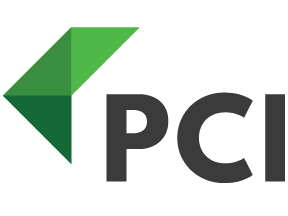[vc_row][vc_column][vc_column_text]The current global crisis puts new pressure on your margins and your people. It’s more critical now than ever to keep projects on time and on budget—while avoiding employee burnout and turnover. Solid project management often comes down to successfully following a few key steps. These three streamlined operations optimize project management to improve workflows, control costs, boost utilization and effectively monitor projects from ideation to delivery.
- Set the right baseline
- Execute project and control progress
- Control your financials
To track project management improvements, we recommend focusing on these KPIs:
- Over-servicing: compare to budget and identify run over (sales or cost price)
- Project margin: revenue minus external costs, and minus cost of hours = project margin
- % complete: percentage progress against the set baseline
Set the right baseline for project success
Sometimes projects fail because of scoping issues, staffing miscalculations, or inaccurate planning and budgeting. All of these can be categorized as “setting the baseline” incorrectly. Here are four steps to getting it right:
- Establish your control point: Having a price quote, and a client-approved cost estimate or budget, is a vital reference point for project measurement and cost control. This should include an established number of revision rounds, complete with a timeline, to secure feedback and make revisions.
- Start with the right project team: Projects are often staffed with whoever is available—not the best people for the job. Establishing the best team for the project before kickoff will save valuable time later.
- Get the client to sign-off on the scope: Without a client-approved scope, you don’t have the documentation to secure all contractual aspects. We recommend that projects don’t begin unless the client has signed the Statement of Work. If you decide to start a project without client sign-off, ensure there is a process in place to mitigate over-servicing.
- Kick off the project and keep everyone aligned: Kick off the project correctly by inviting the core team, including the client team, to establish deliverables, governance, and timeline.
As projects progress, client demands and expectations can increase too. This can result in scope creep, when a project expands beyond the Statement of Work. Project management must focus on two areas—monitoring what has been spent and providing clarity on progress against budget. To monitor project, spend at a basic level, we recommend using our core model of progress management:
The baseline is the contractual budget, the actual is what has been spent so far, and the ETC is the Estimate to Complete. To calculate the Estimate at Completion (EAC), add the ETC and actual together. Or if work is delivered as T&M, the actual spend should be focused on.[/vc_column_text][vc_single_image image=”6772″ img_size=”large” alignment=”center”][vc_column_text]Execute projects and control progress
Establishing ongoing processes is a critical part of project management, with many practices and rules that can be applied, agencywide. But as a minimum, we recommend establishing processes in the following core areas with a regular cadence every month:
- Monthly control: As part of the month-end reporting process, PMs should provide details on the status of a project and evaluate the progress in terms of the value of work in progress (WIP), time and materials (T&M) and the percentage completion of the project (Fixed Price).
- Monthly invoicing: Setting clear monthly deadlines for invoicing will improve cash flow. Although often left to finance teams, we find that PMs can be better suited to handling invoicing, as they are closer to the clients.
- Weekly time and progress management: To maximize return on employee efforts, register time accurately and promptly. Employees need an easy way to submit time, and a secure approval process should be in place, so that all time registration can be complete by the beginning of each week.
- Weekly project staffing process: Project staffing should be updated on one given day a week, to avoid booking conflicts and ensure effective resource planning. Thursday is a good choice, as it leaves Friday to resolve any issues. It’s critical that plans are updated correctly by all, as inaccuracies could lead to planning issues.
[/vc_column_text][vc_single_image image=”6771″ img_size=”large” alignment=”center”][vc_column_text]Control your financials
Depending on your agency’s workflow, you may delegate project financial management to another team member. But from a best practice point of view, we suggest that Project Managers have complete control over project financials, including invoicing, in order to be able to effectively manage project delivery from beginning to end.
Remember, the Statement of Work, price quote, and resulting project budget must all be precise and accurate, as they serve as your baseline for measurement. So, we recommend including the financial terms below in your Scope of Work (SOW). If any are already incorporated into the Master Service Agreement (MSA) with the client, then the SOW should reference that document accordingly.
Five Contractual Terms for Financials
- Payment terms: Ensure that your contract (MSA and/or SOW) has a clear definition of payment terms.
- Delivery dependent payments: When you enter fixed price contracts, ensure deliverables are clearly laid out, then make payments dependent on them—it gives you a solid reason for invoicing the client. Alternatively, a date dependent payment plan with upfront payment would work.
- Type of contract: Make it clear whether the project is fixed price or T&M.
- Expense handling: Set out how expenses will be treated. For example, they might be invoiced on a cost spend basis.
- Assumptions: In your SOW, lay out clear assumptions of expectations and dependencies of deliverables. This includes the number of revision rounds, or the amount of time set aside for the review and approval process.
[/vc_column_text][/vc_column][/vc_row]






